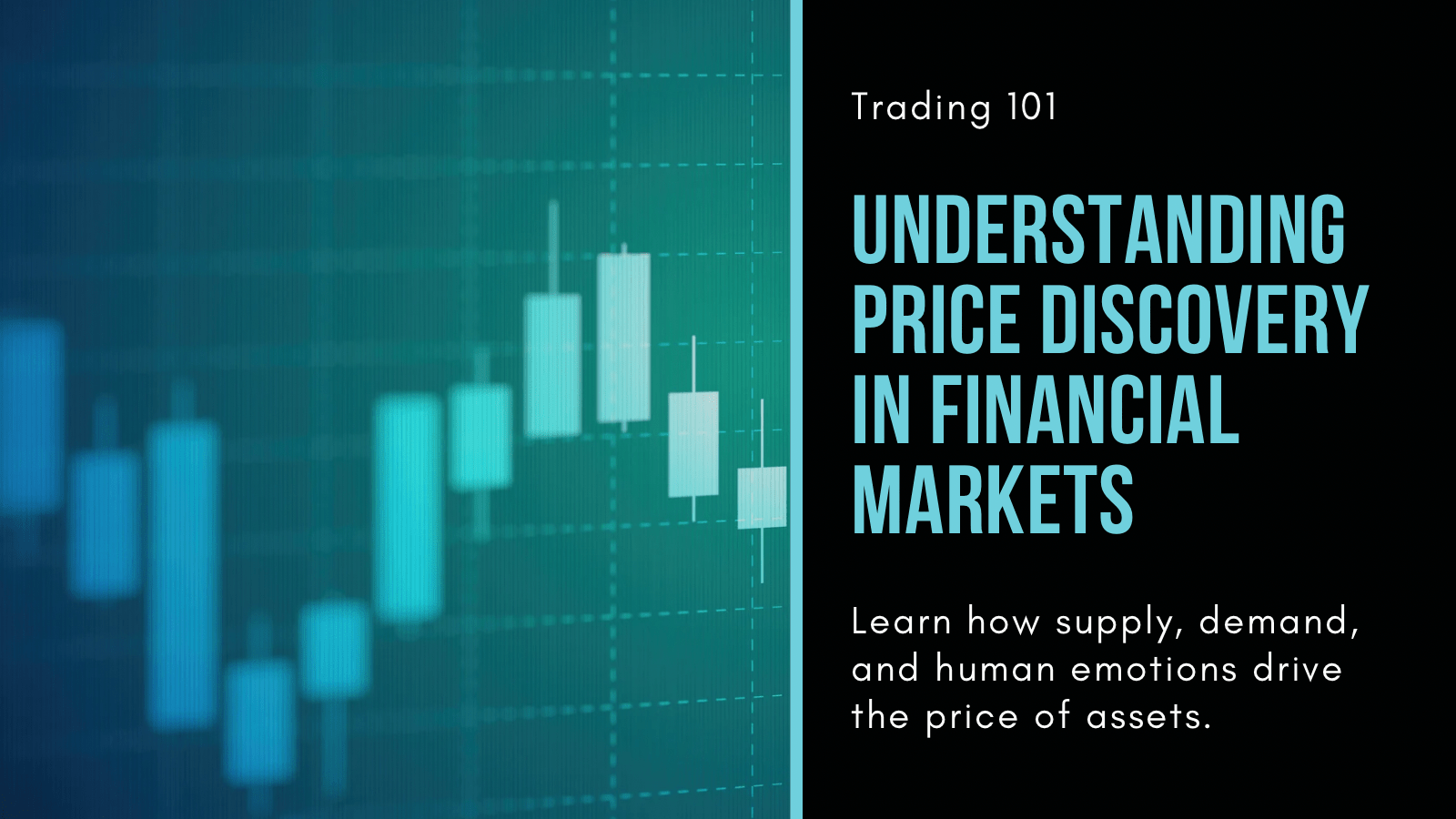Understanding Price Discovery in Financial Markets

With this new epic price rise in Bitcoin, you’ve probably heard people talking about price discovery. But what exactly does it mean? Understanding price discovery in financial markets is important because it arms you with knowledge that you can use to give you some edge in the markets when events like this happens. It’s really all about supply, demand, and human emotion, you know basic economics stuff.
Getting to the Bottom of Price Discovery
I want you to imagine you’re at a flea market, bargaining for a vintage vinyl record, because vinyl is back and is the best way to listen to music, but I digress, back to the real subject. The seller you are dealing with wants to make a profit, but you also want to snag a good deal. That back-and-forth negotiation until you both agree on a price? That’s essentially what price discovery is in financial markets, accept you have more data at your fingertips to work with than you would at the flea market.
Supply, Demand, and the Magic Balance
At its core, price discovery boils down to two things: supply and demand. If everyone’s got the FOMO for something and there’s not enough to go around, prices shoot up. But if there’s more of something than people want, prices drop. It’s all about finding that sweet spot where buyers and sellers are happy.
This is essentially how markets find what is called fair value price of an asset. When something like Bitcoin breaks its all time high and prices start to run, this means that there are more buyers than sellers and everyone is trying to get what is available. But the upward momentum will stop when there are enough sellers in the markets that are wanting to take profits. These moves may come with some major volatility though, so be ready for some wild price swings as the market builds price structure in these uncharted areas.
The Human Factor: Market Sentiment and Speculation
Now, here’s where the action beyond the charts comes into play. Human emotions and predictions start to drive the price. If people are feeling good about an asset, they’re more likely to buy, driving prices higher. On the flip side, if everyone’s starting to panic and there is the talk of blood in the streets, you’ll see a sell-off faster than you can say “market crash.” And then there’s speculation—trying to predict where prices will go next based on news, trends, and gut feelings. If you want a good example of just how people get in these kind of conditions, just go look at Crypto X and you’ll get a taste. It’s gets a little crazy.
Hold on Tight It’s Gonna Get Wild
But hey, it’s not all sunshine and rainbows. Like I said earlier, price discovery comes with its fair share of risks, especially when it comes to volatile assets like Bitcoin. Prices can swing like a wrecking ball in both directions, leaving investors either acting like insane moon-boys or become the biggest grizzly bears you have ever seen. That’s why it’s crucial to tread carefully and have a game plan in place. Make sure if you are trying to day trade this kind of action that you are using proper risk management tools like stop losses to cover any of these volatile swings.
Wrapping It Up
So, there you have it, my little crash course on price discovery. It’s really just the process of figuring out what stuff is worth in the world of finance. Whether you’re haggling for a vinyl or trading Bitcoin, stocks, or really any other asset, understanding price discovery and how to manage your risk during these times of market uncertainty, you can really gain some edge over other traders and make some serious profits along the way! Just keep your head on straight, do your own research, and trade logically!
This post can also be found on my blog on inleo.io on the Hive blockchain
Donate crypto today and help support or efforts here at Coin Logic!

Tip BTC to the following address
bc1q40lxx5uvev63g07z4w0kqfyknayhl2et74cth6

Tip BCH to the following address
qrspq757vq7dvlzlk6dft85j5ha2pvreeurmpt8lej

Tip XMR to the following address
47zfXjdizaw7bPsAQvMFc61TA1BAKf6m2PExhdTnAysc4bXx9NEsmCQ9JHXheiVkKKTUQSFN7GweDKk7YBjMjXdg6FD178t

Tip LTC to the following address
LaTcwYTebM74xWYARrnrWPJYgj11EzM44d

Tip with ETH, BNB, MATIC, or any ERC-20 | BEP-20 token
0x4DBD3A79aa07aF3ac4c83D386e231C0Efe3893D6

Tip Hive, HBD, or any Hive Engine token to the following Hive account
@coinlogic.online
